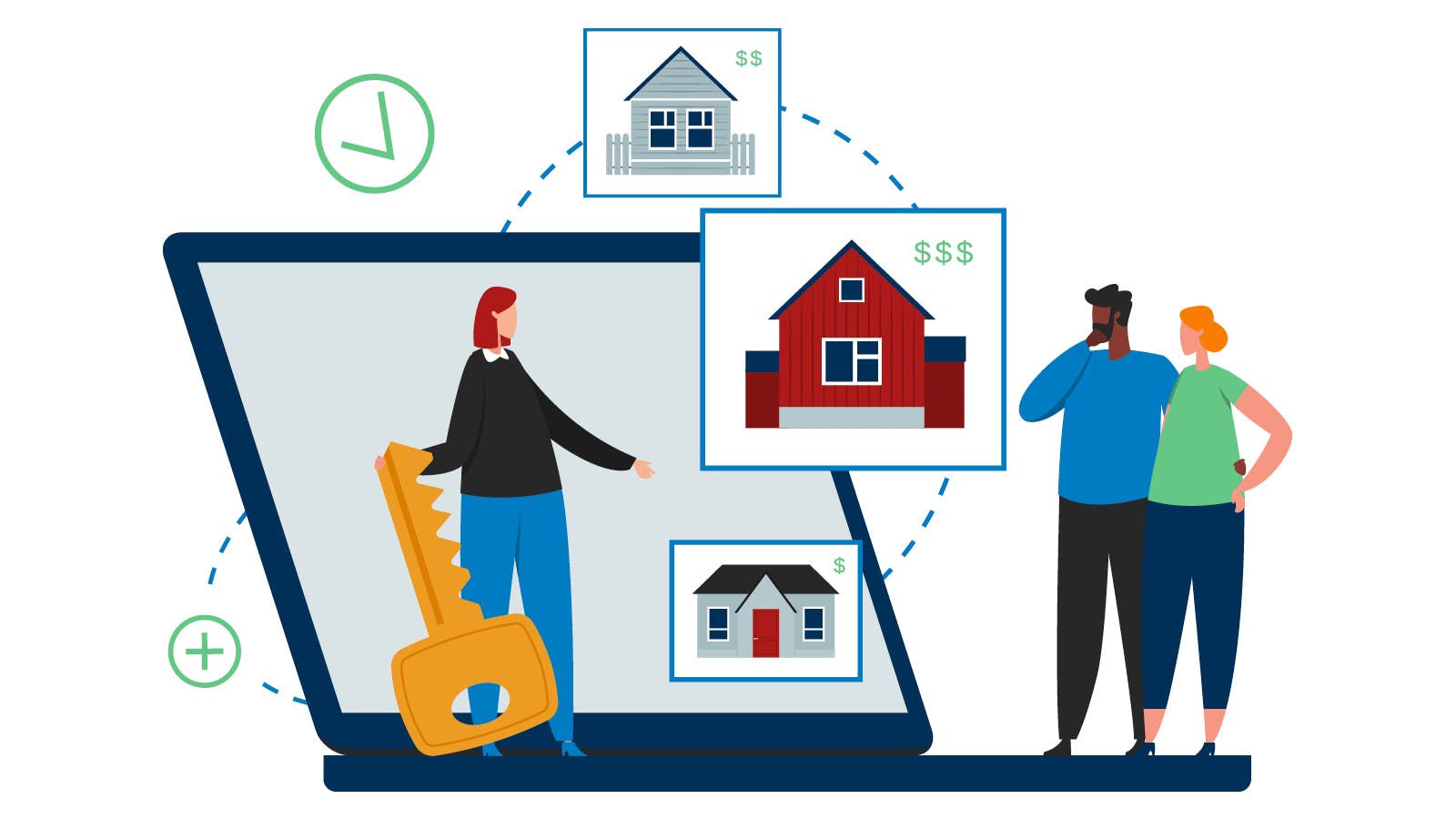It’s no secret that buying a home has gotten pretty expensive. Okay, maybe “pretty” doesn’t exactly cover it…
That’s why lots of hopeful buyers just like you are getting creative! One method they’re turning to more and more? Purchasing attached homes instead of the traditional, white-picket-fence-style single-family home.
In fact, in 2022, attached homes like townhouses made up a sizable 13% of new home construction starts. That’s a 38% increase from the previous year!
And that demand hasn’t halted, as more and more Americans are realizing that an attached home could be the answer to their prayers.
Curiosity piqued? Let’s dive into the definition of an attached home, a few of the potential pros and cons, and how one might just fit into your path to homeownership.
Defining an “Attached Home”
So, first things first: what exactly is an attached home?
Attached home: A house that shares a wall with the neighboring house. You might also hear this type of home referred to as a “townhouse,” “townhome,” or “row house.” Duplexes also often qualify as attached homes. That’s because they usually share at least one wall.
Attached homes are in contrast to single-family homes, which usually sit alone on a lot. They’re also fundamentally different than multi-family homes, like condos, because they don’t have units above or below them.
Understanding the Potential Pros and Cons of Buying an Attached Home
Owning an attached home like a duplex or a townhouse certainly may not be for everyone. Like any property type, these homes come with their fair share of unique potential pros and cons.
Let’s explore a few together:
Potential Pros of Buying an Attached Home
A few of the biggest potential benefits of buying an attached home include:
- Lower price points. If you’re ballin’ on a budget, you might want to check out local communities of townhouses.
- Less maintenance. With fewer exterior walls, you might not be on the hook for the same degree of home maintenance.
- Greater energy efficiency. Shared walls mean better insulation from the elements.
- Lower utility costs. Better energy efficiency could mean less spend on utilities, too!
- Built-in community. You might be more inclined to meet the neighbors if they’re just on the other side of your living room wall.
- Access to a Homeowners Association (HOA). Many townhouse communities are part of an HOA, which can help streamline some aspects of homeownership like maintenance.
Potential Cons of Buying an Attached Home
On the other hand, a few of the biggest potential drawbacks when buying an attached home include:
- Less space. Townhouses and townhomes are typically smaller than traditional single-family homes.
- Less privacy. Of course, shared walls can come with challenges — your neighbors would be that much closer.
- Less freedom. Townhouses usually come with a purposeful, cohesive look, so you might be limited in your some of your design choices.
- Shared responsibilities. If there’s an issue, say a leak or a fire, that affects two homes, you may need to work with your neighbors on determining responsibility and finding a solution.
- Cost of a Homeowners Association (HOA). While HOAs can certainly be a huge help, they usually come at a cost. This amount would be in addition to your monthly mortgage payment. They also tend to come with rules and regulations you’ll want to be aware of.

Ready to Buy an Attached Home?
So, does a duplex or townhouse sound like the perfect fit? Whether it’s the lower price point or the built-in community, for first-time buyers, attached homes may be worth at least a look.
Here are the steps we recommend you take when considering purchasing an attached home:
- Check your credit score. If it’s lower than you’d like, take some time to bump that up.
- Set your budget. Review your savings, income, expenses, and debt to get a good idea of your financial picture. A mortgage professional can always help here.
- Make a down payment plan. If your savings aren’t quite where you’d like them to be, come up with a step-by-step strategy.
- Collect homebuying paperwork. This might include income documentation, proof of assets, personal documents, pay stubs, tax returns, bank statements, IDs, previous addresses, and social security numbers.
- Build your homebuying team [https://www.mottomortgage.com/blog/how-to-find-the-right-fit-for-your-homebuying-team]. Find a real estate agent and a mortgage professional you can really trust.
- Get pre-qualified. Work with your mortgage pro to get a pre-qualification letter. This will give you an initial idea of what the bank may loan you.
- Start shopping. Hit the pavement and check out some duplexes or townhomes! Your real estate agent and mortgage pro will guide you from there.
Final Thoughts: Achieving Homeownership Via Duplex or Townhouse
As more and more Americans struggle with housing affordability, creative options like attached homes are becoming all the more attractive.
If you’re ready to become a homeowner, but a single-family home doesn’t seem quite within reach, don’t give up just yet. An attached home, like a duplex or a townhouse, just might be the perfect fit.
Happy hunting!


